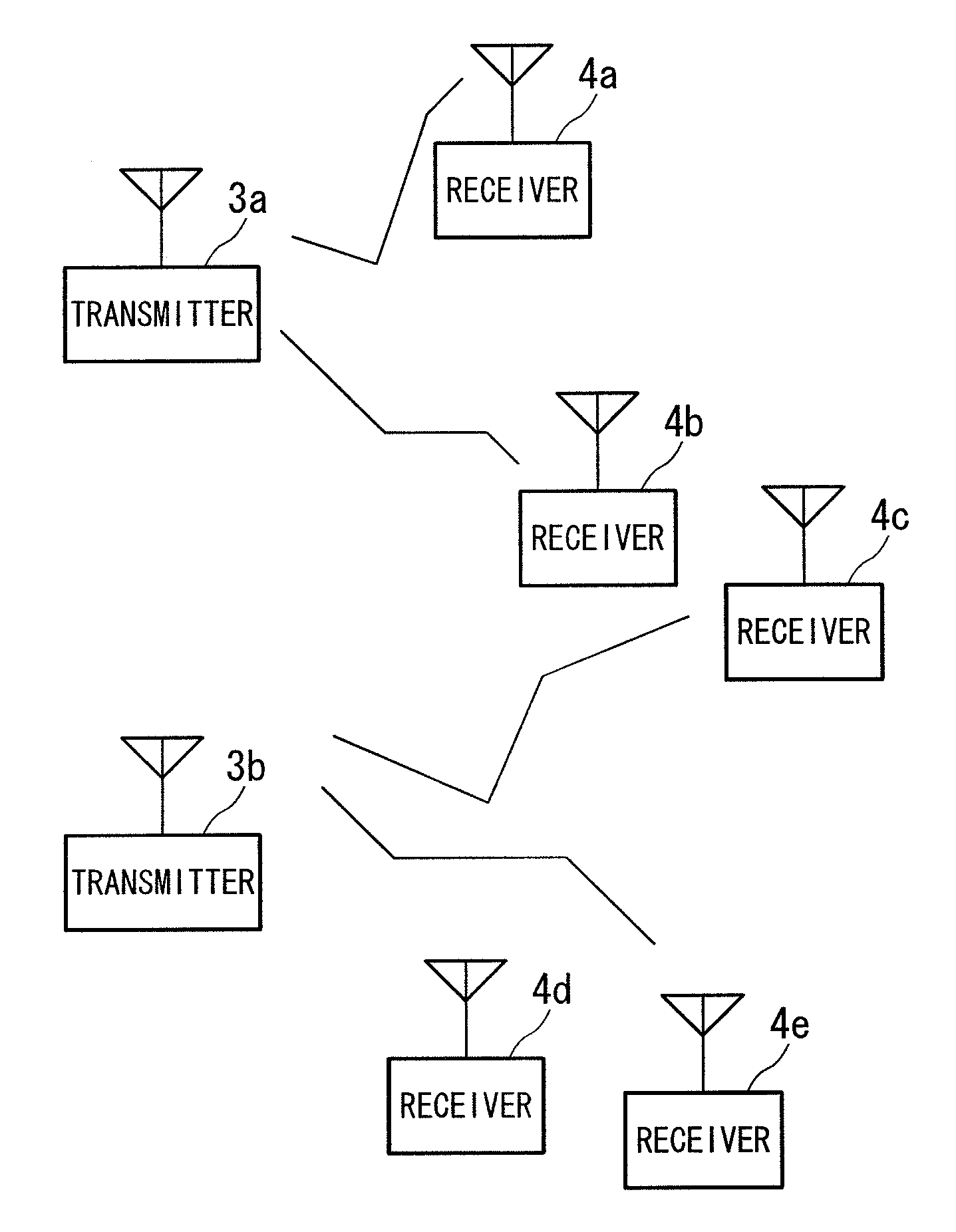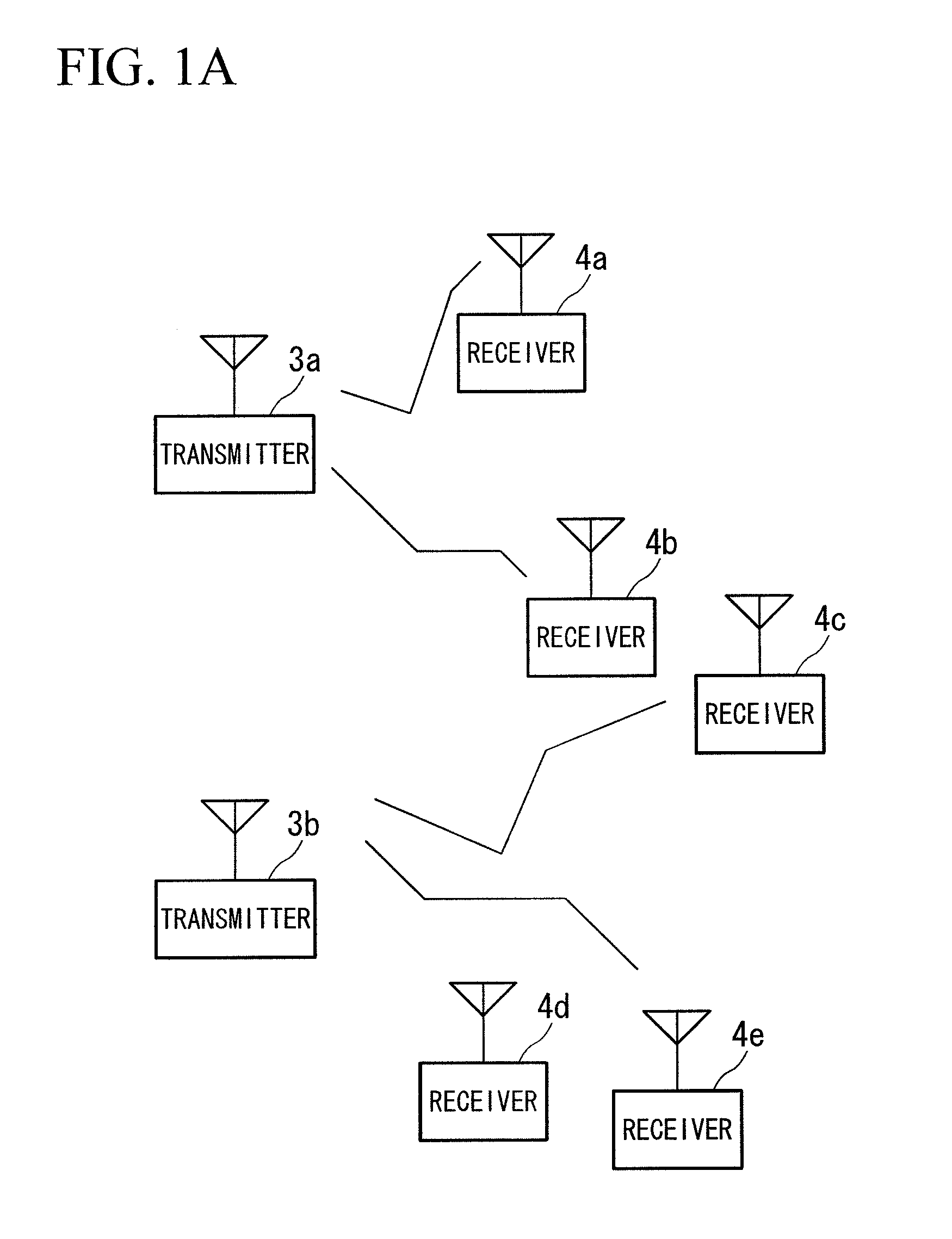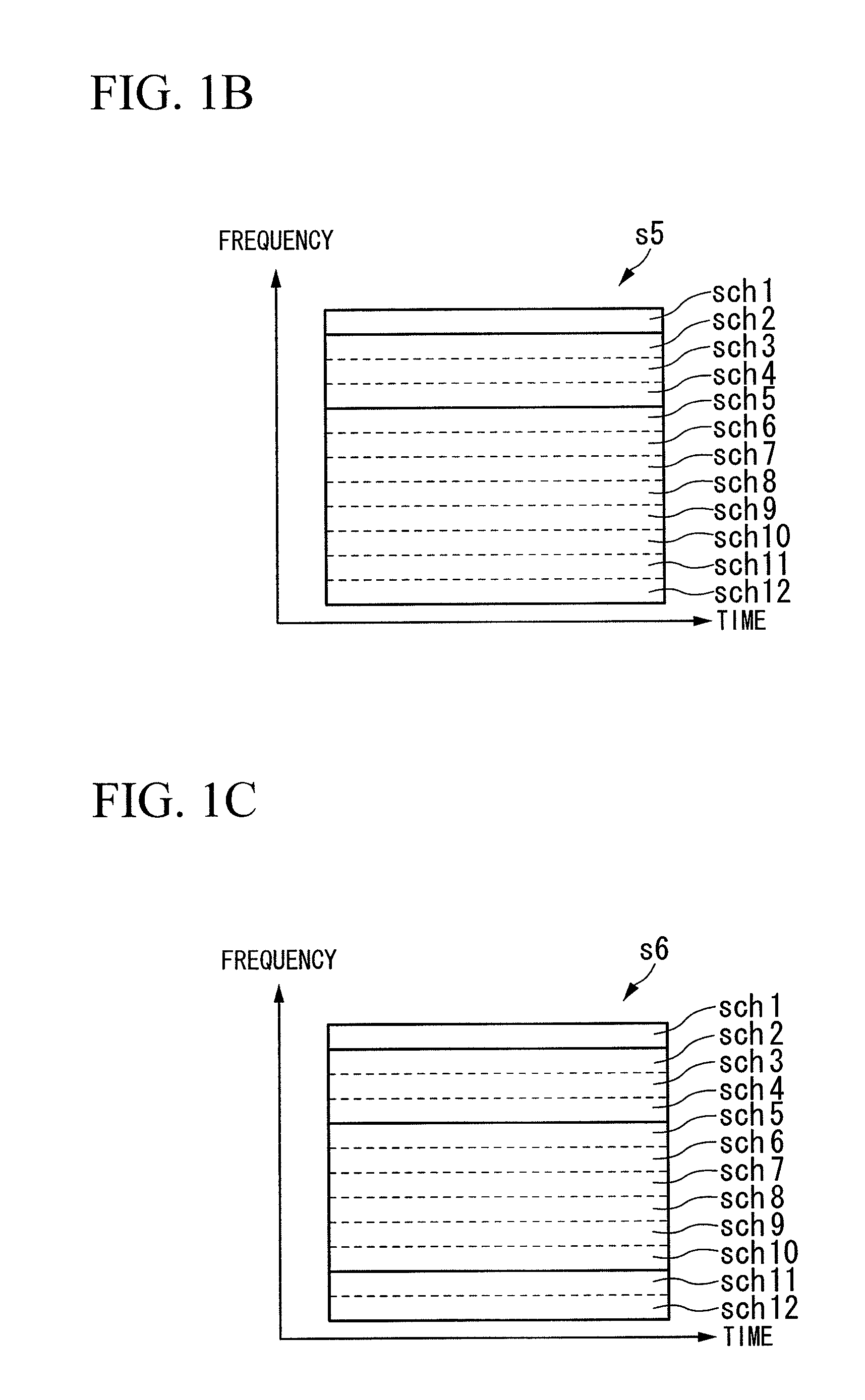Transmitter
a technology of transmitters and receivers, applied in the field of transmitters, can solve problems such as errors in propagation path estimation
- Summary
- Abstract
- Description
- Claims
- Application Information
AI Technical Summary
Benefits of technology
Problems solved by technology
Method used
Image
Examples
first embodiment
[0079]The first embodiment of the present invention will be described first. The present embodiment shows an example using two differing transmitters that use OFDMA and performing communication with some receivers. FIG. 1A is a schematic diagram of the case of transmitters communicating with receivers. During the time that the OFDMA frame that is the object of the description being transmitted, the receivers 4a to 4c perform communication with the transmitter 3a. Also, the receivers 4b to 4e perform communication with the transmitter 3b. That is, the receivers 4b and 4c combine and receive the same signals from both transmitters 3a and 3b by soft combining.
[0080]FIG. 1B and FIG. 1C are drawings that show the constitution of the signals s5 and s6 that are transmitted from the transmitters 3a and 3b. In these drawings, the vertical axis represents frequency while the horizontal axis represents time. Here, the drawings show the case of the signals s5 and s6 each being constituted from ...
second embodiment
[0136]Next, a second embodiment of the present invention will be described. It is one that allows further simplification of the constitution of the receiver with respect to the first embodiment of the present invention.
[0137]FIG. 9 is a diagram that shows the constitution of a subcarrier for propagation path estimation in the second embodiment of the present invention. In this embodiment, the subcarrier for propagation path estimation, which is a subcarrier in which symbols for propagation path estimation are arranged, is allocated at every other subcarrier. A subcarrier in which a subcarrier for propagation path estimation is not allocated is used for communication of control signals (SA1 to SA384, SB1 to SB384). Also, specific known symbols (P1 to P384) are used for the symbols for propagation path estimation, and orthogonal codes (1, 1, 1, 1), (1, 1, −1, −1) are respectively multiplied by the known symbols in the transmitters 3a, 3b.
[0138]FIG. 10 is a block diagram that shows th...
third embodiment
[0152]Next, a third embodiment of the present invention will be described. Although limitations to the orthogonal code used were not added in the first embodiment and the second embodiment, the present embodiment will describe the case of adding limitations to the orthogonal code used to enable a receiver that moves between transmitters to rapidly perform handover.
[0153]In the OFDM communication system of the present embodiment, by repeatedly allocating the code C1 to all of the subcarriers and performing 256 sample rotations, (1, j, −1, −j) repeatedly appears at all of the subcarriers. This is made code C12. Also, by similarly rotating 512 times, it becomes (1, −1, 1, −1), and this is made code C13. Also, for 768 rotations, it becomes (1, −j, j, −1), and this is made code C14.
[0154]Also, when C1=C11, C11 to C14 are all in an orthogonal relationship. The case of using these codes in the present embodiment shall be described.
[0155]In the latter of the examples of constituting the sup...
PUM
 Login to View More
Login to View More Abstract
Description
Claims
Application Information
 Login to View More
Login to View More - R&D
- Intellectual Property
- Life Sciences
- Materials
- Tech Scout
- Unparalleled Data Quality
- Higher Quality Content
- 60% Fewer Hallucinations
Browse by: Latest US Patents, China's latest patents, Technical Efficacy Thesaurus, Application Domain, Technology Topic, Popular Technical Reports.
© 2025 PatSnap. All rights reserved.Legal|Privacy policy|Modern Slavery Act Transparency Statement|Sitemap|About US| Contact US: help@patsnap.com



